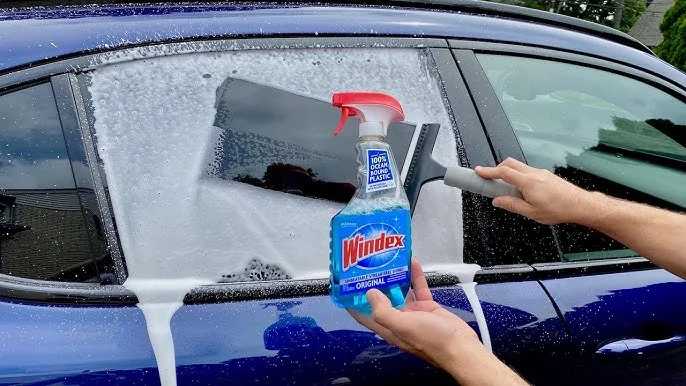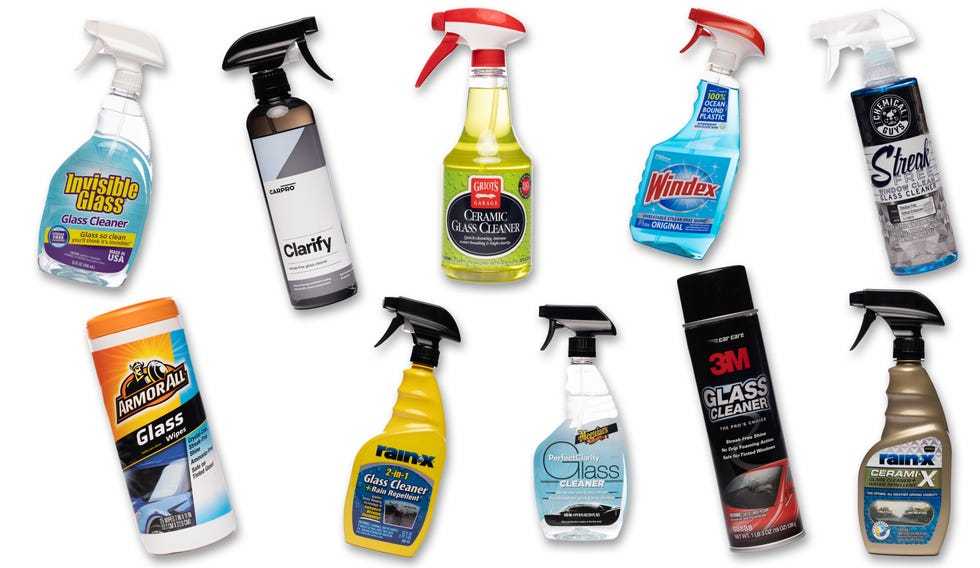Quick answer: To tell if car glass is laminated or tempered, look for specific signs such as the presence of a plastic layer for laminated glass or a crack pattern for tempered glass. Laminated glass remains mostly intact when broken, while tempered glass shatters into small, blunt pieces.
Laminated and tempered glass are the two main types used in vehicles, but knowing how to distinguish between them can be tricky. Laminated glass, often used for windshields, has a plastic layer sandwiched between two glass layers, making it thicker and more resistant to shattering. Tempered glass, used for side and rear windows, is heat-treated to strengthen it, breaking into tiny, dull pieces if shattered. Recognizing the differences isn’t just about safety; it also helps when dealing with accidents or repairs. In this guide, we’ll explore simple ways to identify each type so you can stay informed and confident about your vehicle’s safety features.
How to Identify Laminated vs Tempered Car Glass
Knowing whether your car’s glass is laminated or tempered is important for safety and repair reasons. Both types of glass play key roles in vehicle security, but they have unique features that set them apart. Understanding these differences helps you make informed decisions, especially when replacing or inspecting your vehicle’s windows.
What Is Laminated Car Glass?
Laminated glass consists of two or more layers of glass bonded together with a plastic interlayer, usually made of polyvinyl butyral (PVB). This design keeps the glass intact even when it breaks. It is most commonly used for windshields due to its safety benefits.
When shattered, laminated glass tends to stay in place because the plastic layer holds the fragments together. This prevents dangerous shards from flying around, reducing injury risk. Laminated glass also provides better UV protection and noise reduction.
Characteristics of Laminated Car Glass
- Layer Composition: Multiple layers of glass bonded with a plastic interlayer.
- Break Pattern: Cracks tend to stay in one piece; the glass remains largely intact after impact.
- Transparency: Fully clear without distortions, providing good visibility.
- Safety Feature: Holds together when broken, minimizing sharp shards.
- Common Usage: Mainly used for windshields.
How to Spot Laminated Glass
The easiest way to identify laminated glass is by inspecting the surface of the glass. You might notice a slightly thicker edge or a thin plastic layer when the glass is broken. Conducting a simple test can also help:
- Drop a small, lightweight object like a key onto the glass.
- If the glass crackles but stays in place, it’s likely laminated.
Another method involves checking for a sound difference: laminated glass produces a duller sound when tapped compared to tempered glass.
What Is Tempered Car Glass?
Tempered glass is heat-treated to increase its strength and durability. It is designed to shatter into small, blunt pieces rather than sharp shards when broken. This feature makes it a safer choice for side and rear windows in vehicles.
Tempered glass undergoes a process of rapid heating followed by rapid cooling, which induces compression on the surface. This process enhances its ability to withstand impacts, making it suitable for various car windows.
Characteristics of Tempered Car Glass
- Strength: Up to four times stronger than regular glass.
- Break Pattern: Breaks into small, rounded pieces that are less likely to cause injuries.
- Appearance: Usually slightly tinted or frosted, especially in side and rear windows.
- Safety Feature: Designed to fragment safely into small pieces.
- Common Usage: Used for side windows, back windows, and sunroofs.
How to Identify Tempered Glass
Tempered glass is easier to identify through visual and tactile cues. For example, you can perform a simple test:
- Place a small sticker or etching mark in one corner of the window during installation. Check if the mark is present or intact.
- If the glass shatters, observe the pattern of pieces. Small, rounded fragments indicate tempered glass.
In addition, tapping the glass produces a high-pitched ringing sound characteristic of tempered glass. Its edges may also feel sharper or more polished.
Comparison Table: Laminated vs Tempered Car Glass
| Feature | Laminated Car Glass | Tempered Car Glass |
|---|---|---|
| Layer Composition | Multiple glass layers with plastic interlayer | Single piece of glass heat-treated |
| Break Pattern | Cracks stay in one piece, remains intact | Shatters into small, blunt pieces |
| Usage | Windshields | Side, rear, and sunroof windows |
| Strength | Moderate but resistant to impact | High impact resistance |
| Safety | Holds together after impact, prevents shards | Fragmentation reduces injury risk |
| Visibility | Clear with minimal distortion | May have slight tint or frosted appearance |
| Cost | Generally more expensive due to multiple layers | Less expensive but less impact-resistant for windshields |
Additional Methods to Differentiate the Glass Types
Conduct a Physical Inspection
Look for labels or markings on the glass. Many laminated windshields are marked with “Laminated” or a manufacturer’s logo. Conversely, tempered glass often has a small etching indicating its type, usually in a corner.
Use a Light Test
Hold a flashlight against the glass. Laminated glass may block some light due to the plastic layer, creating a slightly hazy appearance. Tempered glass allows light to pass through with minimal distortion.
Check for a Certification Sticker
Many vehicles have certification stickers showing compliance with safety standards. Laminated glass will often have a label indicating it is “laminated” or “safety glass.” Tempered glass might have a similar mark but often includes the term “tempered.”
Safety Tips When Handling Car Glass
- Always wear gloves to prevent cuts from broken glass fragments.
- Use proper tools if removing or replacing glass components.
- Consult a professional if unsure about the glass type or for repairs.
Related Topics to Explore
- DIY repair tips for laminated and tempered glass
- Understanding car window safety standards
- Signs that your car’s glass needs replacement
- Choosing the right car glass for safety and durability
Knowing how to distinguish laminated from tempered car glass involves both visual inspection and simple tests. Laminated glass is designed for safety and durability in windshields, while tempered glass offers strength and safety in side and rear windows. Recognizing these differences helps ensure your vehicle’s safety features are functioning correctly and can guide you in proper maintenance or repair procedures.
👉 TEMPERED vs LAMINATED glass 🤔🚘 – Know the difference!
Frequently Asked Questions
What visual signs can help distinguish laminated from tempered car glass?
Look for clarity and surface features. Laminated glass often appears clearer and may have a slight green tint along the edges, especially in larger panes. Tempered glass tends to be more uniform, with a slight frosted appearance when shattered, but the surface generally looks more reflective without the layers visible. Additionally, laminated glass might show a very thin plastic layer when viewed at certain angles, whereas tempered glass is a solid, single piece without visible layers.
How does the way the glass breaks indicate if it’s laminated or tempered?
Tempered glass shatters into small, blunt pieces that are less likely to cause injury, creating a spider-web or star pattern upon impact. Laminated glass, on the other hand, remains largely intact even when broken, with cracks often developing in the outer layer but the plastic core holding the shards together. If the glass cracks but doesn’t fall apart easily, it is likely laminated; if it disintegrates into tiny fragments, it’s probably tempered.
Is there a simple way to test a small section of car glass on the spot?
You can perform a quick inspection by tapping the glass lightly with a key or coin. Tempered glass produces a higher-pitched ringing sound due to its hardness, while laminated glass produces a duller sound. However, this method is not conclusive for safety reasons. For accurate identification, it’s best to look for visual cues or consult a professional, especially when safety is a concern.
What role does light reflection play in differentiating the two types of glass?
Laminated glass tends to reflect more light due to the plastic layer sandwiched between the glass sheets, which can cause a slight sheen or glare. Tempered glass generally reflects light more uniformly without noticeable layers. Observing the glass under different lighting conditions can help identify these differences, especially when combined with other visual signs.
Can the thickness of the glass help tell them apart?
In some cases, laminated glass is slightly thicker because it contains two glass layers with a plastic interlayer, especially for windshields. Tempered glass is usually thinner and more uniformly manufactured. Measuring the thickness at a specific point can give clues, but comparing it to manufacturer specifications or consulting an expert provides more certainty.
Are there safety features or markings that indicate whether car glass is laminated or tempered?
Many laminated windshields have manufacturer markings, labels, or stickers indicating they are made from laminated safety glass. These markings are often found in the corner or along the edge of the glass. Tempered glass may also have a stamp or small etched mark indicating it is tempered. Checking for these markings can quickly confirm the type without the need for physical testing.
Final Thoughts
To identify laminated vs tempered car glass, observe its response to impact. Laminated glass tends to stay intact, with a plastic layer holding shards together. Tempered glass shatters into small, blunt pieces, making it easily recognizable. Check for specific markings or labels on the glass for confirmation. Understanding these differences helps you determine the type of glass quickly and accurately.



